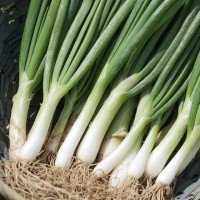
Melon Petit Gris de Rennes
Petit gris de Rennes is an aromatic melon of the Cantaloupe type. This delicious sweet old variety is named after Bishop de Rennes. He had it in his garden over 400 years ago. The plant produces small grey-green fruits and does well in our climate. The Rennes melon must be topped during growth to increase the chance of fruiting.
Sowing
Sowing can start from March to mid-May indoors in a seed tray. Place the seeds with the point downwards at a depth of 1 cm and keep the soil slightly moist. When the seedlings have four leaves, you can transplant them.
Keep a planting distance of 70 cm. You can let the plant creep or grow upwards along a rope.
When the plant is about a meter high, remove the bottom six shoots and let the higher shoots grow. The female flowers will grow on these shoots.
Let the upper tendrils grow to about 120 cm and then top them.
The growth force will go to the fruits. Do not give the plants too much fertilizer and water sparingly at the base to prevent diseases and to prevent too much leaf formation.
You can recognize the ripe green-gray fruits by the strong smell they give off.
Do not pull them loose but turn the fruits. They should be able to come loose easily.
- Stock: In Stock
- Brand: Gaia Seeds
- Category: Melon
- SKU: GS-VGME02
Available Options
Melon Petit Gris de Rennes
Petit gris de Rennes is an aromatic melon of the Cantaloupe type. This delicious sweet old variety is named after Bishop de Rennes. He had it in his garden over 400 years ago. The plant produces small grey-green fruits and does well in our climate. The Rennes melon must be topped during growth to increase the chance of fruiting.
Sowing
Sowing can start from March to mid-May indoors in a seed tray. Place the seeds with the point downwards at a depth of 1 cm and keep the soil slightly moist. When the seedlings have four leaves, you can transplant them.
Keep a planting distance of 70 cm. You can let the plant creep or grow upwards along a rope.
When the plant is about a meter high, remove the bottom six shoots and let the higher shoots grow. The female flowers will grow on these shoots.
Let the upper tendrils grow to about 120 cm and then top them.
The growth force will go to the fruits. Do not give the plants too much fertilizer and water sparingly at the base to prevent diseases and to prevent too much leaf formation.
You can recognize the ripe green-gray fruits by the strong smell they give off.
Do not pull them loose but turn the fruits. They should be able to come loose easily.







